A deep travel overview of Honshu for my custom Japan private tours
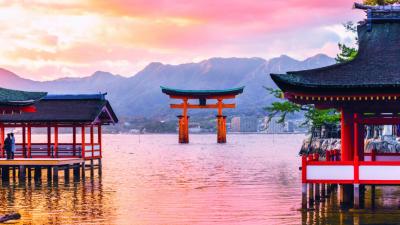 The island of Honshu is where most of my Japan private tour clients spend almost all of their time and for good reason. The island is home to basically all of Japan’s top tourist destinations: Kyoto, Osaka, Tokyo, Nagano, Hakone, Takayama, Ise, Kanazawa, Koyasan, Nara, Himeji and Kurashiki and Hiroshima . . . Honshu is huge but most tourists follow the Golden Route between Tokyo and Kyoto . . .
The island of Honshu is where most of my Japan private tour clients spend almost all of their time and for good reason. The island is home to basically all of Japan’s top tourist destinations: Kyoto, Osaka, Tokyo, Nagano, Hakone, Takayama, Ise, Kanazawa, Koyasan, Nara, Himeji and Kurashiki and Hiroshima . . . Honshu is huge but most tourists follow the Golden Route between Tokyo and Kyoto . . .
Most of my Honshu clients travel the island using a combination of YJPT's guided private tours and with my unique independent self-guided tours. I have good local tour guides in the main centers of Tokyo, Kyoto, Osaka and Hiroshima and also in Takayama. For local tour guides in other cities and areas please enquire.
Honshu Island is about 1,400 km from end to end. From Tokyo the northern tip of Aomori (just across the strait from outdoor nature paradise Hokkaido) is 580 km distant. From Tokyo to the western end of Hoshu island (Shimonoseki) is another 820 km.
For travelers from Canada, the USA or Australia, these distances are nothing, as many of us drive 600 km in a day to get somewhere . . . But in Japan driving is not the way to travel as it takes extra time (lots) and is not especially relaxing (except in the countryside where everything is relaxing comparatively speaking . . .). Someone has to drive, and someone has to navigate. Best to rely on Japan’s amazing rail system and the new, improved and significantly more expensive Japan Rail Passes
For a better understanding of YJPT's tour and service design and design process, expenses, and prices please see my compact but informative full service pricelist in JPY and USD, all retail priced.
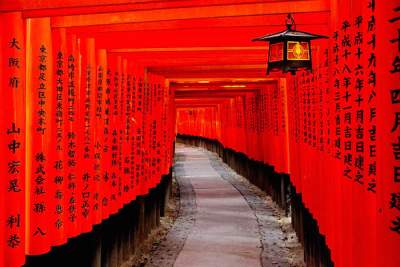 The climate of Honshu can be broken down into three primary areas: north, central and far west. The north, extending north from Tokyo, is cold in winter (the homes have super thick walls, unlike the rest of the island) with lots of snow and empty space. Summers are cooler and less humid (much like Hokkaido). The central area extends from Tokyo to Kyoto | Osaka and is known for cold damp winters and hot humid summers (the Japanese alps, unlike the coastal areas, are colder in winter and cooler in summer and not damp or humid in comparison. The far west of Honshu Island covers the flat coastline between Osaka and Hiroshima. This zone is warmer in winter through the effects of the Inland Sea.
The climate of Honshu can be broken down into three primary areas: north, central and far west. The north, extending north from Tokyo, is cold in winter (the homes have super thick walls, unlike the rest of the island) with lots of snow and empty space. Summers are cooler and less humid (much like Hokkaido). The central area extends from Tokyo to Kyoto | Osaka and is known for cold damp winters and hot humid summers (the Japanese alps, unlike the coastal areas, are colder in winter and cooler in summer and not damp or humid in comparison. The far west of Honshu Island covers the flat coastline between Osaka and Hiroshima. This zone is warmer in winter through the effects of the Inland Sea.
The rainy season (June to midway through July) affects most of the island (most of Japan really; except for Hokkaido, sort of).
Central and far west Honshu are also both on the path of most typhoons that sweep in from Southeast Asia in late August through to the end of September.
Culturally speaking, Honshu can be divided into 5 zones: 1. Tokyo | Kanto. 2. Osaka-Kyoto | Kansai. 3. The Japanese Alps (Nagano, Takayama). 4. Hiroshima | The Inland Sea. 5. Northern Honshu (notably, the prefectures of Aomori, Iwate and Akita).
Most foreign tourists coming to Japan for the first time visit Tokyo and Kyoto and the surrounding areas. Hiroshima and the Seto Inland Sea are popular for art and for paying homage to the darkness of World War II. The northern areas of the island and the alps zone are most popular in winter and summer (skiing and hiking . . .).
Your Japan Private Tours has organized countless trips across the major zones of Honshu Island over the past 30 years. Most clients travel the island using a combination of my guided private tours and YJPT's unique independent self-guided tours. I work with good local tour guides in the main centers of Tokyo, Kyoto, Osaka and Hiroshima and also in Takayama. For local tour guides in other cities and areas please enquire. How can I help you on your first trip or your next trip to Japan? The options are all yours . . .
Guided tour FAQs (start time and location; itinerary design; expenses; tips . . .). Self-guided tour FAQs (design; delivery; types; expenses . . .).
- Honshu private travel transportation and accommodation overview
- Honshu main sightseeing, hiking and nature destinations
- Honshu food & cuisine overview for private travel
- Honshu compact history overview
Content by Ian Martin Ropke, owner of Your Japan Private Tours (est. 1990). I have been planning, designing, and making custom Japan private tours on all five Japanese islands since the early 1990s. I work closely with Japan private tour clients and have worked for all kinds of families, companies, and individuals since 1990. Clients find me mostly via organic search, and I advertise my custom Japan private tours & travel services on www.japan-guide.com, which has the best all-Japan English content & maps in Japan! If you are going to Japan and you understand the advantages of private travel, consider my services for your next trip. And thank you for reading my content. I, Ian Martin Ropke (unique on Google Search), am also a serious nonfiction and fiction writer, a startup founder (NexussPlus.com), and a spiritual wood sculptor. Learn more!
Honshu private travel transportation and accommodation overview
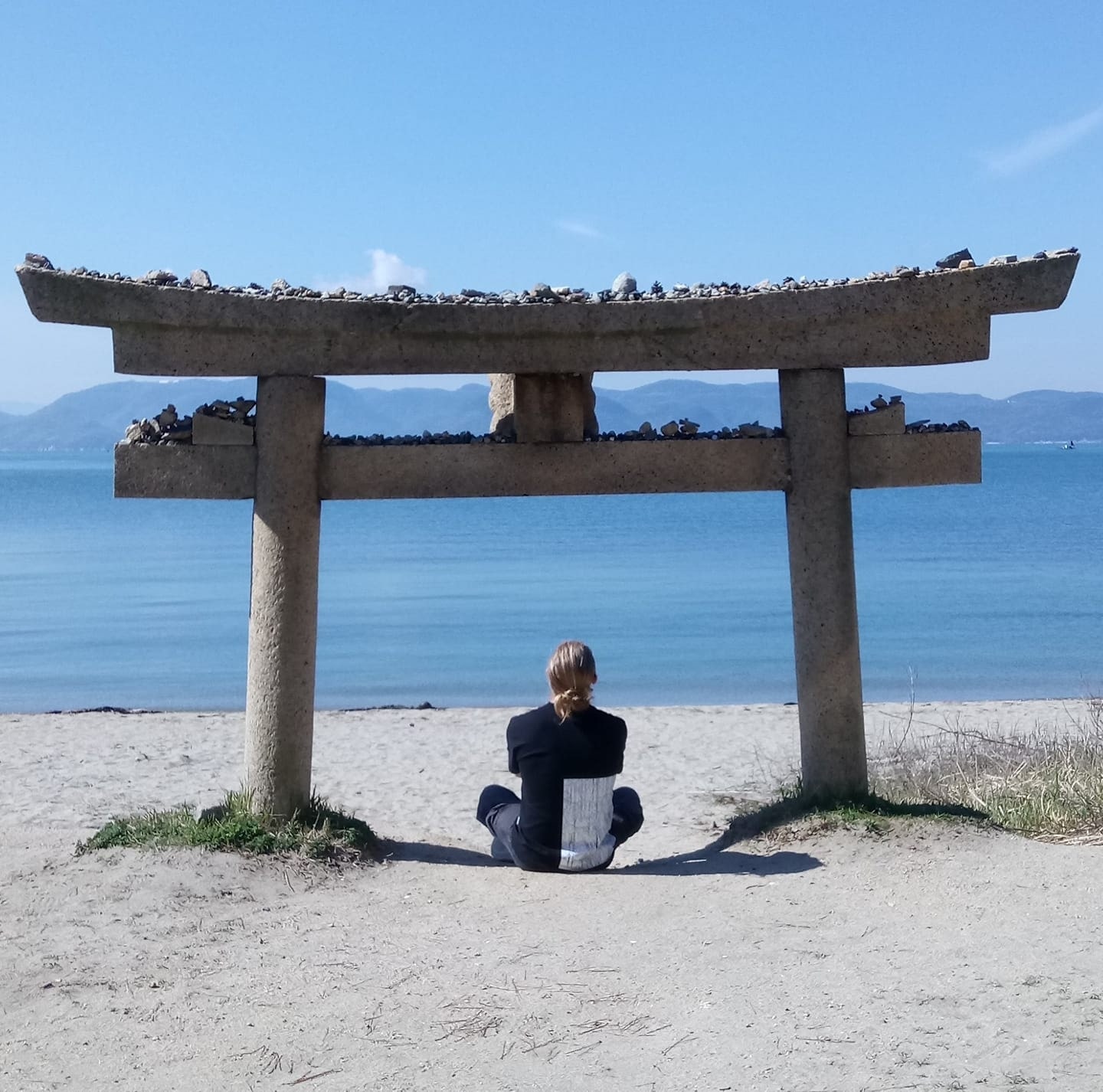
Honshu is Japan’s largest island and also where nearly 90% of Japanese society lives and works. The island is also by far the center of Japanese and foreign tourist travel. And it should be no surprise that travel on Honshu is almost all by bullet train and high-speed JR train lines. The travel times below are for Nozomi class bullet trains and express JR lines. IF you have a Japan Rail Pass you can not use the Nozomi class trains and the slower Hikari class bullet trains are much less frequent. However, not a problem if you plan ahead . . .
- Tokyo to Kyoto: 2 hours 20 min by Nozomi class bullet train
- Tokyo to Hakata (Fukuoka): 5 hours by Nozomi class bullet train
- Tokyo to Hakodate: 4 hours 30 min by Nozomi class bullet train
- Tokyo to Takayama: 4 hours and 10 minutes by bullet train and fast JR train from Nagoya
- Tokyo to Kanazawa: 40 min by bullet train
- Tokyo to Mount Koya (Koyasan): 2-3 hours by train; 4 hours by highway bus
- Kyoto to Hiroshima: 1 hour by bullet train
- Kyoto to Kanazawa: 2 hours and 34 minutes by bullet train
- Kyoto to Takamatsu (Shikoku): 2 hours and 10 minutes by bullet train and fast JR train
- Kyoto to Takayama: 3 hours and 9 minutes by bullet train and fast JR train from Nagoya
- Kyoto to Hiroshima: 1 hour and 40 minutes by Nozomi bullet train
Accommodation on Honshu is mostly something travelers can do online via Expedia and Bookings. I always recommend location, location, location. Pick your hotels and ryokans with location in mind: within walking distance of a train or subway station, big green areas, and easy access to cuisine and interesting stroll areas. Pretty simple advice that adds to the quality of your travel time. In off-the-beaten-track areas the online booking engines are less reliable and I often assist clients in these areas: sometimes free of charge, and sometimes for my standard booking charge of Yen 6,600/booking per group (up to 9 people). Either way, I offer expert advice on where to stay that is personalized to who you are and how you like to travel.
- Honshu private travel transportation and accommodation overview
- Honshu main sightseeing, hiking and nature destinations
- Honshu food & cuisine overview for private travel
- Honshu compact history overview
Honshu main sightseeing, hiking and nature destinations
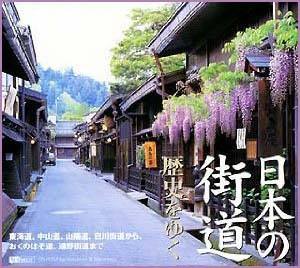
Honshu is a big island, and it is covered in guidebooks with an overweight focus on Tokyo, Kyoto, Osaka. These are Honshu’s big cities and Tokyo, and Osaka are the biggest international arrival destinations. And Kyoto, of course, is viewed as the mecca of everything traditional about Japan in too many ways. Here, I will look at Honshu as an entire island landscape and try to give a simple overview of all its interesting destinations, including the big ones focused on in standard travel media. These days, more and more of my southeast Asian clients are going further and further off the beaten track on Honshu to get closer to the “authentic” smaller, quieter places that are all over the island.
First let’s divide Honshu into two key geographical parts: 1. The area north of Tokyo leading to the southern tip of Hokkaido. 2. Honshu west of Tokyo all the way to the eastern edge of Kyushu island.
- Honshu private travel transportation and accommodation overview
- Honshu main sightseeing, hiking and nature destinations
- Honshu food & cuisine overview for private travel
- Honshu compact history overview
Honshu island tourism centers north of Tokyo: Top Tohoku destination highlights: Honshu north of Tokyo to Hokkaido:
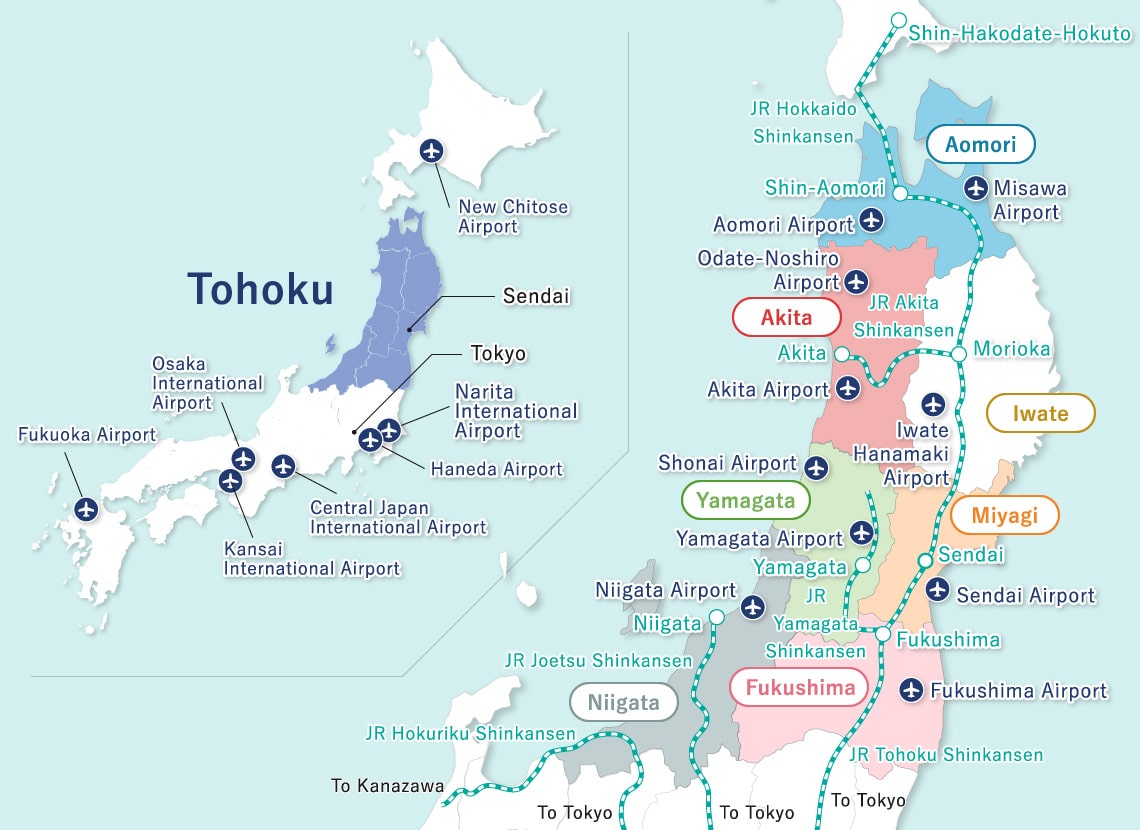
Gunma Prefecture: Gunma is the first prefecture inland and north of Tokyo. The landlocked prefecture is famous for its hot springs (Kusatsu Onsen, Ikaho Onsen, Minakami Onsen and Manza Onsen) and accessible mountain terrain ideal for hiking (Oze National Park). If you love silk, then Japan’s first modern silk factory in Tomioka is a great experience.
Tochigi Prefecture: Tochigi is landlocked and famous for its hardwood and towering cedar forests. Nikko is in Tochigi and so is the Nasu-Shiobara hot spring resort and hiking area.
Fukushima Prefecture: This prefecture on the Pacific coast northeast of Narita International is fairly developed but the edges are well worth exploring on your way further north. Highlight destinations in Fukushima are: Aizu (samurai historical area), Bandai (beautiful volcanic highland area), Ouchijuku (a preserved old post town on an old trade route), and Oze National Park (hiking trails through mountain wetlands; popular for spring flowers and fall colors).
Miyagi Prefecture: Miyagi is just north of Fukushima and also on the coast. It’s much less developed and offers endless authentic scenery and local traditional culture. The scenic bay of Matsushima and its pine forest beach scenes are considered to be the most beautiful natural sight in Japan! And the inland forested Naruko Gorge is a major autumn color spot.
Iwate Prefecture: Iwate is rugged both inland and along the Pacific coast. It is home the best ski resort in the Tohoku region (Appi Kogen). The traditional culture landscape offers amazing locations including Hiraizumi (medieval former regional capital), Kitakami (stunning cherry blossoms), the eye pleasing Sanriku Coast, and Tono (a rural town famous for its folktales and legends; great for children!).
Aomori Prefecture: Tohoku's Aomori Prefecture forms the northern tip of Honshu island. It was the primary Edo trading outpost for all of northern Honshu (trading with the Emishi and Ainu indigenous peoples in the region) for almost a thousand years. The autumn colors around volcano-made Lake Towada are a major area attraction, as are the virgin beach forests of Shirakama Sanchi. The ancient, deeply spiritual and witchy Shimokita Hanto peninsula is home to Fear Mountain or Osorezan. The first Buddhist temple was built on the mountain in 862 and the area is full of ancient Bodhisattva (Jizo) statues, piles of stones collected by the spirits of children, pinwheels for the dead, views like heaven and views like hell. For many the “blind” female Shinto shamans (Itako), who can talk with the dead, is a fascinating attraction (there are only 20 left!).
Akita Prefecture: Akita is on the west side of the top of Honshu island and is known for its huge ancient forest reserves and a vibrant undeveloped coastline. The Hachimantai mountainous region is well-known for its rustic hot springs. You can also find snow festivals in Akita and old samurai districts and a sense of being very far away from the madding world.
Yamagata Prefecture: Moving south on the west side of Honshu I will begin with Tohoku's Yamagata Prefecture known for its three sacred shrine mountains (Dewa Sanzan), the steep mountainside scenes at ancient Yamadera temple, one of the best old-fashioned hot spring towns in Japan (Ginzan Onsen, and Kaminoyama Onsen town, with an old castle and fruit orchards), and the volcano hot spring / ski resort of Zao.
Niigata Prefecture: Niigata is a big prefecture and some of it is very developed but even, so the undeveloped areas are amazing. Area attractions: some of the largest rice fields in Japan, amazing coastal and alpine scenery, huge fireworks displays in summer, skiing, and hot spring bathing year-round. Unique destinations include Echigo Tsumari (modern art countryside setting), and the incredible attractions of Sado Island (home to the most famous taiko Japanese drumming troop in Japan; great summer festival scenes!).
Nagano Prefecture: Mountainous Nagano, site of the 1998 Olympic Winter Games, is where there are many things to see, do and experience. And it has its “own” bullet train line: making it easy to get to from Tokyo. The famous Snow Monkeys are also in Nagano (a full day trip from Tokyo!). Some of the best ski resorts in Japan, including Hakuba, are in Nagano. And so is the Edo-period Kiso Valley and its preserved post towns. For hikers and nostalgia lovers, the attractions of Kamikochi are exceptional as well. The castle in Matsumoto City is first class! Lots of hiking and hot spring soaking in really authentic Japanese settings. Togura Kamiyamada hot spring, next to a historic fortress, is well-known for being foreigner friendly.
- Honshu private travel transportation and accommodation overview
- Honshu main sightseeing, hiking and nature destinations
- Honshu food & cuisine overview for private travel
- Honshu compact history overview
Honshu island tourism centers west of Tokyo to the far side of Hiroshima
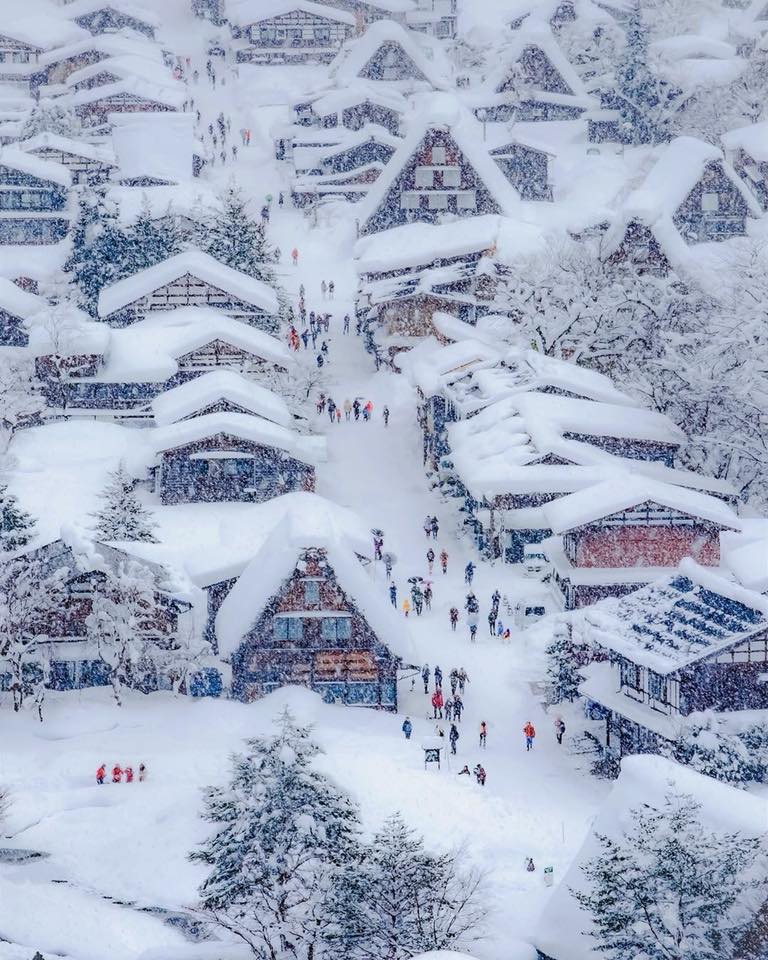
Izu Peninsula: Izu is a warm micro-climate, i.e. tropical, that is a day trip from Tokyo by bullet train but is actually best suited for two or three nights, as there is so much to see and relaxation levels are high too! Izu can also be done as a full day trip from Tokyo. Highlights: Great coastal and inland hiking, farmhouses, the historic Shuzenji onsen hot spring town, paragliding, scuba diving, snorkeling, marine tour cruises, and Buddhist history that goes back to the 9th century.
Takayama: Takayama is really the heart of the Japanese Alps region and sort of on the way to Kyoto. It can also be a bridge to Kyoto via Kanazawa (The Little Kyoto; see below). I highly recommend taking this branch of the Golden Route as it includes a lot of really authentic locations. Takayama Old Town is a historical wonder and the city’s early morning markets (every day!) create a time-travel experience. Nearby you will find the stunning thatched-roof village of Shirakagawgo, hot spring villages, and the living woodwork and basket weaving crafts of Hida. Exceptional value for two nights or more . . .
Kanazawa: With a population of 465,000 this city, known as the Little Kyoto, offers tourists looking for old, traditional Japan a wide range of authentic attractions including a preserved samurai district, a rare, living maiko and geisha district, a great castle, morning markets, and a surrounding area that has much more! The rugged, isolated Noto Peninsula (and the Wajima lacquer center) is a day trip from Kanazawa, as are great coastal beach settings, hot spring resorts and outstanding local produce and seafood. Kyoto is only 2 hours away on the Thunderbird Express, so even if you have only an afternoon in the Little Kyoto the next morning is all yours too; you can easily arrive at your Kyoto hotel in the midafternoon: perfect! And Kanazawa is only 2 hours from Tokyo too by Hokuriku bullet train.
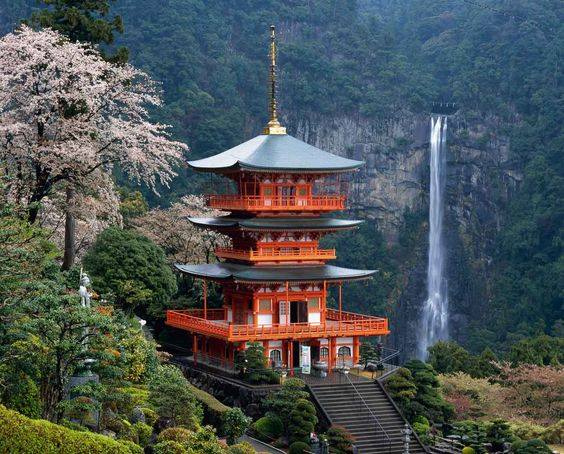
Ise and Wakayama: The coastline southwest of Nagoya (which is only 30 minutes from Kyoto by bullet train!) is, like Izu, a sub-tropical microclimate famous for pearl divers, huge lobsters and Japan’s most sacred Shinto shrine (Ise Jingu grand shrine). The historical drive (or train ride) south from Ise takes off-the-beaten-track tourists past stunning coastal views into the ancient worlds of Kumano Shrine and the Kumano Kodo pilgrimage route, and a bit further inland lies the Buddhist gem town of Koyasan (famous for 5-star temple stays and exquisite meals in stunning settings).
Tango Peninsula: The Tango Peninsula is a bit like Big Sur in southern California. This rugged and hardly visited (by foreigners) peninsula is less than 4 hours from Kyoto by car or train. Unless you have lots of time, you will need to rent a car in Tango (easy to do!) to see the full landscape along the coast and the tiny villages inland. The famous on-stilts Ine fishing village is in Tango. Tango’s pine forested sand bays, with no one on them, are suited for great camping. And the entire area is well-known for its high-value hot spring resorts and laid back, half-asleep, atmosphere.
Tottori Prefecture: Tottori continues the forgotten side (also referred to as the “dark side of Japan”) of Japan journey that begins on the Tango Peninsula (see above). Though Tottori is most famous for its coastal sand dune landscapes the prefecture is also home to spectacular Mount Daisen (Daisen has long been a spiritual center for mountain worship. Daisenji Temple lies on wooded slope; with excellent mountain trails) and numerous inland villages. Again, ideal for rental car travel.
Shimane Prefecture: Shimane is one of the most relaxing and out-of-this-world destinations in Japan. The prefecture stretches along the Japan Sea and is historically a key landing point for traders from China and Korea. Matsue (home to Lafcadio Hearn: Japan’s most famous foreigner) and its many waterways, along with ancient Izumo Taisha (the oldest Shinto shrine in Japan!) offer exceptional experiences. There is a lot to see and do in this area including biking, hiking and more. The rural worlds in and around Tsuwano, including a lovely samurai district, are also excellent. If you really want to get away, get to Shimane prefecture, a scenic, relaxing 3-hour train ride north Okayama (which is on the Tokaido bullet train line).
Seto Inland Sea area: The area of the Seto Inland Sea is not on the main Golden Route linking Tokyo and Kyoto but, all the same, the area offers a number of unique destinations. The most popular of these is the Naoshima art island complex (modern and contemporary) art, which is a long day trip from Kyoto. Many foreign travelers stay in nearby Kurashiki, the famous town lined with willows along canals, and many art related facilities (old art versus modern art with a few exceptions). However, the Seto Inland Sea area also has many off-the-beaten-track islands and coastal towns offering “old world” atmosphere and hardly any tourists at all!
Hiroshima area: The area around Hiroshima is quite developed. Most tourists are interested in the city’s Peace Park and the picturesque scenes at the seaside shrine on the island of Miyajima. But there are other old coastal areas worth exploring in the area, if you have the time or make the time!
- Honshu private travel transportation and accommodation overview
- Honshu main sightseeing, hiking and nature destinations
- Honshu food & cuisine overview for private travel
- Honshu compact history overview
Honshu food & cuisine overview for private travel
Many of the dishes and cuisine types listed for Tokyo, Kyoto and Osaka below can also be found in other cities. But the best of that food is usually to be found where it originated. This list in no way covers all the different types of Japanese cuisine but my A-Z Japanese cuisine list pretty much does (the A-Z list is posted on my blog, for each month of the year, all linked to the same file). Please request a separate file if interested.
Tokyo
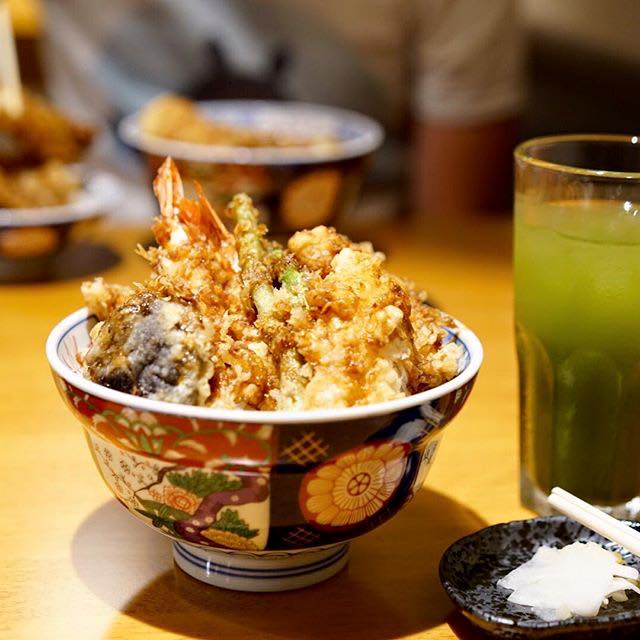
As Japan’s largest city by far, Tokyo offers the widest range of food choices in Japan and ranks worldwide as a foodie paradise. No city has more Michelin stars than Tokyo, believe it or not. The city also has great night life street food areas and a few world class old world fresh food markets. Food fun from dawn to dusk!
Tendon: Tendon is a super popular lunch time option across Tokyo. It’s just a bowl of white rice topped with two really big deep-fried shrimp. But it can also feature vegetables and other toppings.
Tsukemen: Tsukemen is nothing more than dipping ramen noodles in separate bowl of special broth. It was invented in Tokyo in the early ’60s. From there a range of options grew but the core is still dipping noodles in a separate bowl of thick flavor packed sauce.
Abura soba: Literally “oil noodles” (but they are not very greasy at all), Abura soba was “born” in the Musashino district of western Tokyo. This is a “dry” noodle cuisine with nothing more than toppings and vinegar. And the oil? There isn’t any and the name is a historical question mark.
Monjayaki: These pan-fried savory pancakes are Tokyo’s version of Osaka’s much more famous okonomiyaki cuisine. Monjayaki pancakes are thin, almost like crepes, and feature toppings too (cabbage, chopped squid, sakura shrimp, mochi rice cake chunks, cheese, spicy fish roe, tomatoes, and corn). The dish developed in the late Edo period (1600-1867) and then went through an enormous revival in the 1980s.
Fukagawa-meshi: Tokyo or Edo started out as 15 fishing villages and Fukugawa was one of them. The area was rich in short-necked clams (asari: a key ingredient in miso soup) and oysters. Fukugawa-meshi is a stew of clams, green onions, and tofu poured over room temperature rice.
Tokyo buns: Bread and therefore wheat only came to Japan in the 1850s! And from the start it was a privileged business and certain specialty breads made it into popular culture. These classic buns were created in Tokyo: Kare pan (spicy curry buns); Anpan (buns filled with red bean paste; Anpan Man is a popular children’s hero!); Cream pan or Japanese cream puffs invented in 1904 using sweet custard cream.
Chanko nabe: Chanko nabe is a super protein-rich stew consumed in large quantities by sumo wrestlers during their weight-gaining phase. The soup is usually made from fish or chicken stock. And in the “stew” you will find a mixture of most these foods: chicken, pork, fish, vegetables, tofu . . . As a hot pot cuisine chanko nabe is decidedly an autumn, winter, spring option for most. It is also a specialty cuisine and not super easy to find.
Sushi: Sushi is something that has become common anywhere in Japan as a snack but the real world of sushi is more like going to a “food temple or shrine” and the more expensive the sushi the more austere the atmosphere. You have four choices: sushi from a convenience store or supermarket, conveyor belt sushi (an amazing high value option anywhere!), small local and usually busy sushi restaurants, and then the world of the high priests of sushi. I know them all: just ask.
Anago: Anago or saltwater conger eel is native to Tokyo and much loved. It is less fatty than unagi or freshwater eel. Anago is still a thriving species. The freshwater eel not so much! Anago is most often served as tempura but it is also grilled. Sauces again of a different kind . . .
Omurice: An omelet skillfully wrapped around a sizeable portion of rice and other ingredients has long been a favorite for poor university students but it is also a super popular family dining option and something every kitchen cook can whip up . . . And don’t forget the omurice performance wizards!
- Honshu private travel transportation and accommodation overview
- Honshu main sightseeing, hiking and nature destinations
- Honshu food & cuisine overview for private travel
- Honshu compact history overview
Kyoto
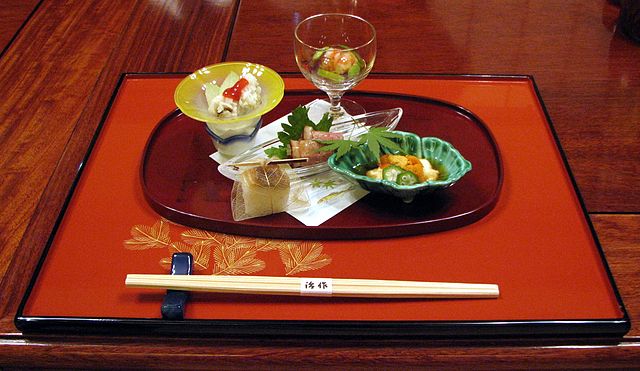
Kyoto is famous for its cuisine culture. In fact, the best vegetables in the land are Kyoyasai vegetables, which are unique to Kyoto Prefecture. The city also has 2-3 great covered market streets: Nishiki, west Sanjo, and Furukawacho (north Gion).
Kaiseki haute cuisine: This fish and no meat cuisine is Kyoto’s most famous and most expensive. Each meal is nuanced to the seasons in both the ingredients chosen and the ceramic motifs used.
Buddhist Shojin Ryori: Buddhist Shojin Ryori is mostly a vegetarian version of kaiseki haute cuisine specifically for Kyoto’s huge population of Buddhist monks (vegetarian by definition); most big Zen temples specialize in high-class vegetarian cuisine.
Obanzai Ryori: Obanzai Ryori consists of the most popular home cooked dishes native to Kyoto. Usually, obanzai restaurants offer normal menus with traditional Japanese dishes and on the wide long counter a row of huge bowls of obanzai favorites (seasonal for the most part).
Yudofu (Silky soft tofu): Yudofu is a popular local specialty, as is tofu and its by products, and again this has much to do with Kyoto’s 1,200 years of Buddhist history. Yudofu is based around Japan’s silkiest and smoothest tofu (kinudofu: very hard to “capture” with chop sticks and thus fun too!) served with freshly sliced green onions, ground sesame seeds, and a special soy dipping sauce.
Yuba (Tofu cream): Yuba is made by boiling soybean milk and skimming the skin that forms on its surface. It has a soft texture and light soybean flavor which is enhanced with soy sauce, freshly grated wasabi and ponzu (citrus dressing).
Kyo Tsukemono (Kyoto style pickles): Kyoto style pickles are made with vinegar and salt which turns vegetables like daikon radish, turnips and Chinese cabbage into powerful healthy tastes. Senmaizuke stands out for its bright white big slices of daikon turnips seasoned with sweet vinegar, konbu seaweed and togarashi pepper.
Kyoto style sushi: Sushi originated in Edo (modern day Tokyo) but there is a unique local Kyoto version that is extremely popular. Kyoto sushi focuses on salted preserved fish and uses extra vinegary rice. Kyoto is land locked and fresh fish had to be walked in from the north coast or Osaka. Hard to preserve in midsummer! One of the most popular varieties is sabazushi, which is pickled mackerel tightly wrapped around rice and encased in a thin sheet of kombu seaweed.
Namafu: Namafu is a traditional Kyoto delicacy that uses highly refined wheat gluten and mochi rice flour. It is a popular meat substitute also favored by the monk class. It has a chewy, stringy like texture that closely resembles meat.
Yatsuhashi: Yatsuhashi is possibly Kyoto’s most famous confectionery and can be found all over the city from souvenir shops to department stores. This sweet cinnamon regional delicacy made from glutinous rice flour can be either eaten raw or baked. The raw form is soft and chewy and is very similar in texture to mochi.
Wagashi tea sweets: Wagashi are the sweet one receives with a bowl of whipped maccha tea and they are works of art in themselves. Though wagashi can be found across Japan, Kyoto is known as the place where this art form got started in the late 16th century!
- Honshu private travel transportation and accommodation overview
- Honshu main sightseeing, hiking and nature destinations
- Honshu food & cuisine overview for private travel
- Honshu compact history overview
Osaka
Osaka is known as the gourmet capital of Japan historically and going broke on eating out was something the affluent tried hard to do. Since the enormous rise of modern Tokyo (post 1945), Osaka has lost its food ranking but only because Tokyo has become such a powerful international center. Osaka has two excellent fresh food markets: Kuromon Ichiba Market and the Tsuruhashi Korean Market (amazing!).
Takoyaki: Takoyaki or octopus balls a street food favorite, the world of specialty restaurants, and on the menu of most large izakayas. The secret to eating delicious takoyaki is to buy it right off the hot molds and eat it while it’s hot.
Okonomiyaki: Okonomiyaki is first and foremost fun like fondue is fun or a backyard barbeque is fun: everyone has a chance to make their own food! Also described as thick savory pancakes, okonomiyaki has long been popular with university students on a budget and local families. You make it at your table or counter and the table or counter is essentially a big metal grill. Amazing toppings and choices for ingredients and super fun!
Negiyaki: Negiyaki are thin okonomiyaki without the cabbage and the pork. Instead, lots of green onions or negi on top. It is then flavored with nothing more than a light soy sauce.
Taiko manju & Taiyaki: Taiko-manju are Japanese baked sweets made in a hot griddle mold in the shape of a drum. Taiyaki come in the shape of a fish. Both are popular street foods and at festivals.
Kitsune Udon: Kitsune Udon consists of thick white udon wheat noodles in a broth in a big bowl with slices of deep-fried tofu on top. It originated in Osaka. The deep-fried tofu on top is sweet as it is marinated in mirin sweet rice wine. The main characteristic of Osaka style udon soup is that it has a light flavor compared to the Tokyo style (in Tokyo everything is saltier! in Kyoto not so much!). “Kitsune” means fox and the foxes of the countless Inari shrines are said to love this kind of tofu!
Kushikatsu: Kushikatsu is a cuisine based on deep-fried meat or vegetables served on a stick. The Tsutenkaku area in Osaka is famous for Kushikatsu restaurants. The skewers, once served, are dipped in various sauces. Lots of fun when seated at a counter where you can watch all the action!
Yakiniku: Yakiniku or grilling meat over a fire and eating the finished meat with various sauces is a relatively new cuisine in Japan. Buddhism more or less made eating meat of any kind a sin until the late 19th century when American and European ideas began to spread rapidly (around the same time Buddhism ceased to be Japan’s official religion: only Shinto is official now!). Yakiniku is largely Korean in origin and no city in Japan has a deeper and older connection with Korean immigrants. Today, the center of the biggest Korean Town in the Kansai region is in Tsuruhashi, Osaka.
Horumon: Horumon cuisine is focused on the broiled innards of pigs or cows and it is definitely not for everyone (many Japanese don’t like it all, but some do!). Horumon also originated in Osaka. It can be found in specialty restaurants and on deep izakaya menus.
Doteyaki (stewed beef sinew): Doteyaki is beef sinew stewed in miso, sweet sake, and sugar, and is also a Horumon dish. You can find it in Yakiniku or Izakaya restaurants, and it is also a popular snack with alcohol that you can buy in supermarkets or meat shops.
Butaman: Butaman are Chinese steamed buns filled with pork and vegetables and they are also identified with Osaka, but you can buy them almost anywhere these days (usually in the colder months). Osaka’s 551Horai is Japan’s most famous butaman restaurant.
- Honshu private travel transportation and accommodation overview
- Honshu main sightseeing, hiking and nature destinations
- Honshu food & cuisine overview for private travel
- Honshu compact history overview
Compact simple Honshu island history overview
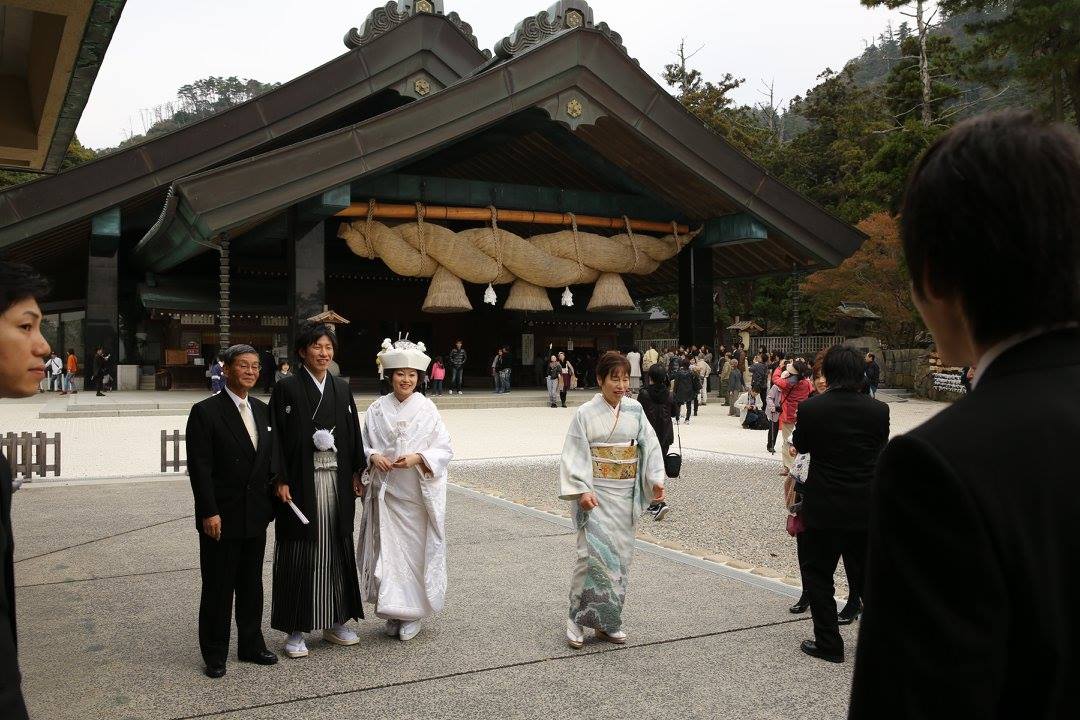
The history of Honshu island is really the history of Japan with few exceptions. Though Japanese civilization began in Kyushu, the closest area to mainland China and Korea, it reached another level entirely when it moved to the Osaka area in the 5th century or so, maybe a bit earlier. The compact historical overview of Honshu is all you will need to understand the essence of Japanese history from the beginning. For a longer but equally simplified history of Japan please see the links on the left side of my blog main page. For a more detailed history of each of the other islands see the links at the bottom of this page above the footer.
Kofun period: 300–538: Centralized Japanese civilization in its earliest form both in Kyushu and in the Osaka area. Kofun are Japan’s unique and huge ancient burial mounds. Naniwa (Osaka) is the first centralized capital of Japan, briefly.
Asuka period: 538–710: Buddhism and expansion in Asuka (perfect for walking, biking and great picnic locations!), southeast of Osaka, Japan's second centralized capital. Introduction of Chinese writing system (kanji).
Nara period: 710–794: State Buddhism and expansion in the magnificent capital of Nara, which is Japan’s second-most traditional tourist destination after Kyoto. Beginnings of "Japanese" building architecture and design approaches.
Heian period: 794–1185: The birth of the long serving Imperial capital of Kyoto. Isolation from China and new Japanese forms of everything. Hiragana and katakana syllable writing system invented. New forms of Buddhism (Tendai and Shingon).
Kamakura period: 1185–1333: First shogun dynasty (headquarted in Kamakura, just west of Tokyo), the start of the samurai warrior class, the rising power of Zen Buddhism for the warrior class. The first forms of Buddhism for the people (Pure Land and True Pure Land sects).
Muromachi period: 1333-1576: The power of the Zen sects increases, leading to trade again with mainland China (Japan sells gold and silk and imports green tea). The formation of Japan's first craft guilds in Kyoto. Increased power stuggles between powerful daimyo feudal lords. New forms of Japanese Zen art. The second shogun dynasty: the Ashikaga shoguns.
Azuchi-Momoyama period: 1576-1603: Civil war; the first Japanese castles are built as guns change the nature of war; Oda Nobunaga begins consolidating power in central Japan; the rise of Toyotomi Hideyoshi and continued consolidation of Japan from his Osaka Castle powerbase; he invades Korea twice. The Japanese arts "rennaisance" continues with lots of gold in paintings and sliding screens. Noh theatre develops and flourishes.
Edo period: 1603-1867: Tokugawa Ieyasu manages to consolidate almost all of Japan (with the exceptions of southern Kyushu and southwest Shikoku). The Tokugawa shogun dynasty builds its new base in the fishing villages of Edo and develops neo-Confucian ruled society. The rise of the merchant class and the fall of the samurai class (no war: no money). Isolation from the outside world and also the death penalty for Christian worshippers. The Portuguese increasily trade with the Japanese at the southern port of Nagasaki. The Portuguese are kicked out and replaced with the Dutch who introduce European science to Japan. The nightlife and entertainment world of Edo is immortalized in woodblock prints. The Americans topple the Tokugawa shogunate and the Western provinces restore the Emperor to political power. The Westernization of Japan begins.
Meiji period: 1868-1912: The westernization of Japan continues with a new military force; train tracks are built to everywhere; increased trade with the West; Japanese people begin to eat meat and dress in Western clothing; Japanese paintings inspire the early Impressionist painting movement in Europe.
Taisho period: 1912-1933: The Taisho period was a time of great freedom and freedom of expression, including new art and a lot of novels. The period ends with the brutal rise of the military and ambitions of war with neighboring countries.
- Honshu private travel transportation and accommodation overview
- Honshu main sightseeing, hiking and nature destinations
- Honshu food & cuisine overview for private travel
- Honshu compact history overview
Learn more about Japan’s main islands with these links
Content by Ian Martin Ropke, owner of Your Japan Private Tours (est. 1990). I have been planning, designing, and making custom Japan private tours on all five Japanese islands since the early 1990s. I work closely with Japan private tour clients and have worked for all kinds of families, companies, and individuals since 1990. Clients find me mostly via organic search, and I advertise my custom Japan private tours & travel services on www.japan-guide.com, which has the best all-Japan English content & maps in Japan! If you are going to Japan and you understand the advantages of private travel, consider my services for your next trip. And thank you for reading my content. I, Ian Martin Ropke (unique on Google Search), am also a serious nonfiction and fiction writer, a startup founder (NexussPlus.com), and a spiritual wood sculptor. Learn more!